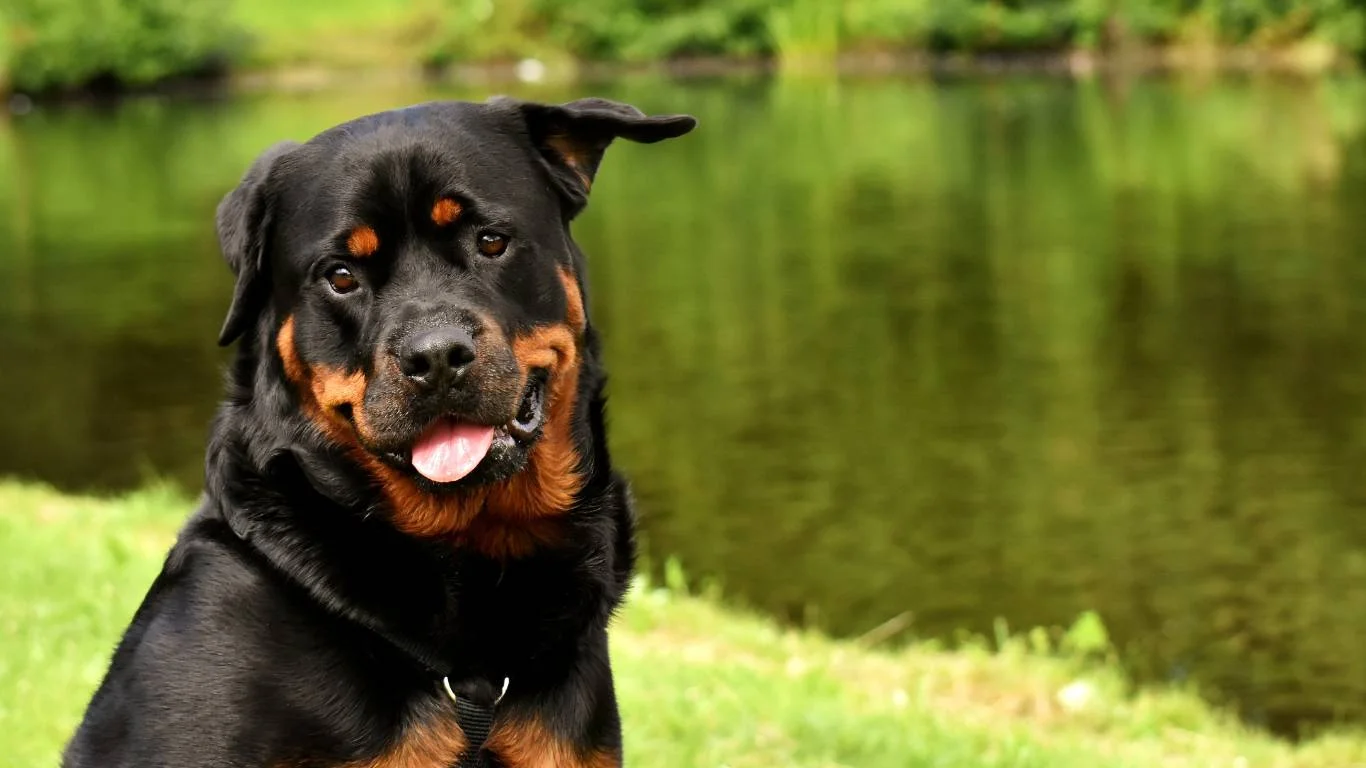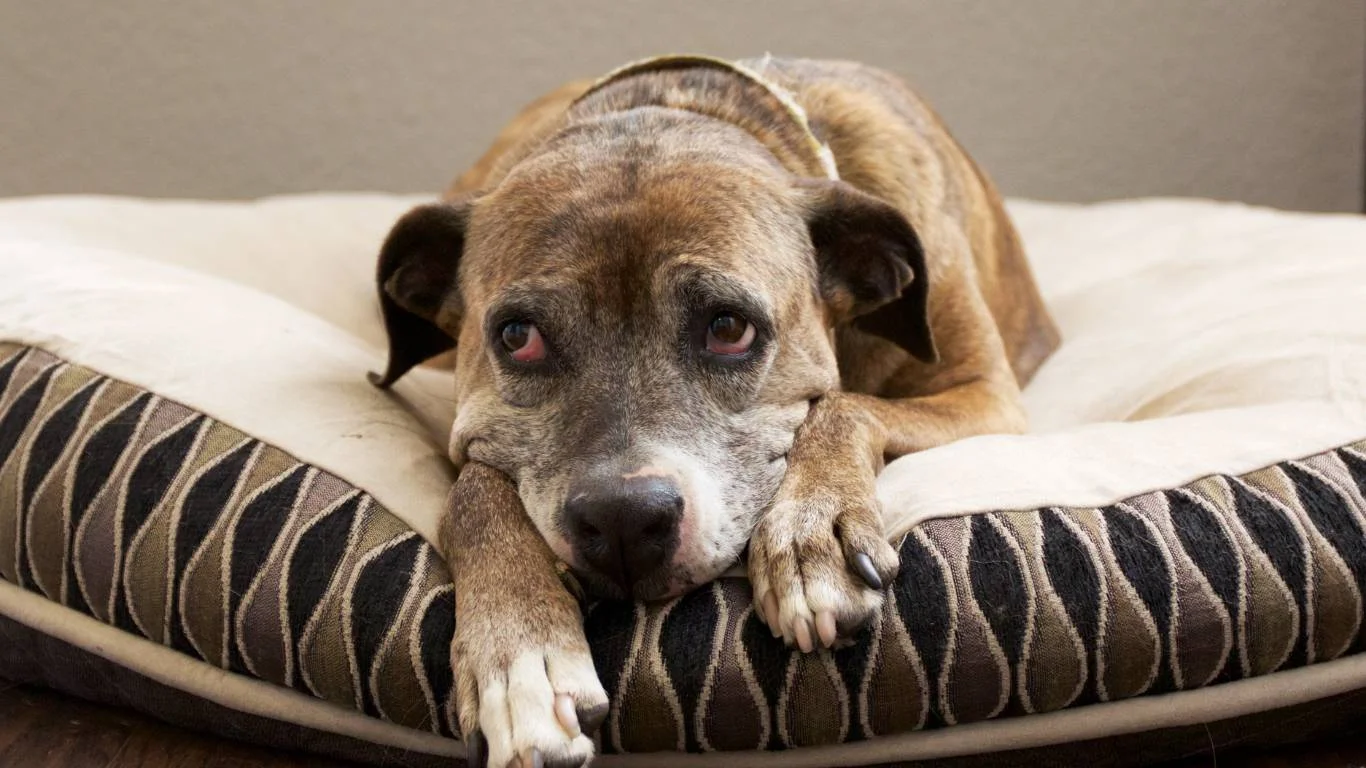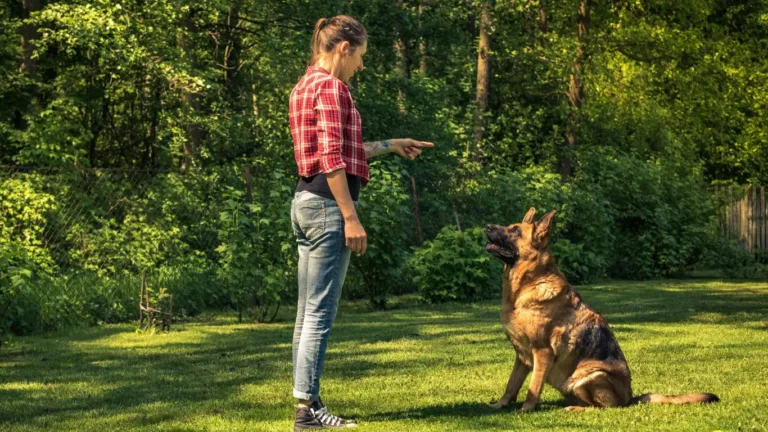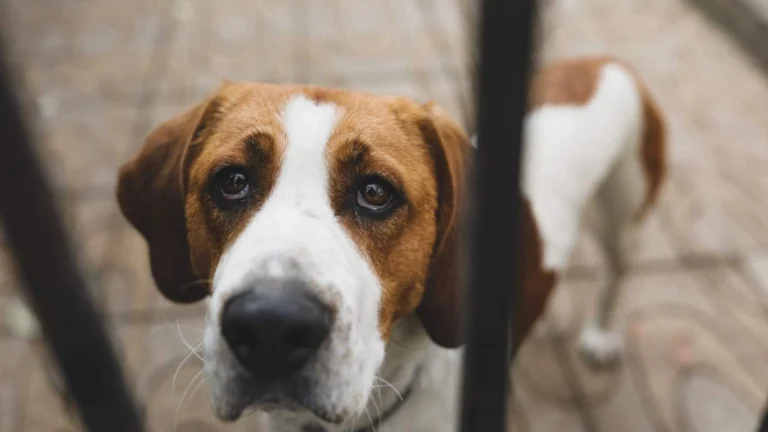Why Is My Dog Shivering and Acting Weird? Discover the Shocking Truth
Ever noticed your dog trembling out of the blue and acting, well… kinda off? I’ve had more than a few pet parents come into the clinic, worried and wide-eyed, asking, “Why is my dog shivering and acting weird?” And honestly, it’s a valid concern. When your dog isn’t behaving like their usual goofy or affectionate self, it’s easy to let your imagination run wild. As a veterinary assistant with a special focus on nutrition, I’ve seen a wide range of reasons behind this kind of behavior—some harmless, others more serious.
Common (and Not-So-Common) Reasons Dogs Shiver or Seem Off

1. They’re Cold—Yes, Even With All That Fur
Okay, let’s start simple. Sometimes shivering is just shivering. Like us, dogs can catch a chill. Smaller breeds like Chihuahuas or Mini Pinschers are especially sensitive to cold, and short-haired dogs or older pups with thin coats can feel the cold way more than you’d think. If your dog’s shaking while outside in cold weather or after a bath, odds are they’re just cold. A cozy sweater and warm snuggles usually fix that.
2. Stress or Anxiety Can Trigger Trembling
I’ve lost count of how many dogs I’ve seen trembling in exam rooms. Veterinary anxiety is real. Loud noises (looking at you, fireworks), new environments, or even separation from their favorite human can send some dogs into a shaking fit. Some dogs are just naturally more nervous, and stress-induced shivering is their way of coping. You’ll often notice other signs too—like tucked tails, panting, or hiding behind your legs.
3. Pain or Discomfort—It’s Not Always Visible
This is where things get trickier. Dogs are champs at hiding pain. I remember a sweet senior Beagle named Rusty who started trembling and acting off at home. Turned out, he had arthritis that was flaring up worse during cold weather. Shivering can be your dog’s subtle way of telling you something’s hurting. Maybe it’s joint pain, dental pain, or even tummy troubles.
- Limping or avoiding stairs
- Sudden aggression when touched
- Lack of appetite or energy
If you’re seeing those along with shivering, it’s time to call the vet. Don’t brush it off as just old age.
Health Conditions That Could Be Behind the Shaking

1. Generalized Tremor Syndrome (GTS)
This one’s a bit of a medical mystery. Often seen in small, white-coated dogs like Maltese or Westies, Generalized Tremor Syndrome causes full-body shaking without an obvious reason. The weird part? It usually responds to steroids. GTS isn’t super common, but it’s something vets keep in the back of their minds when no other causes add up.
2. Nausea or Gastrointestinal Upset
Ever had a tummy bug that made you shaky and miserable? Dogs feel the same. Shivering can come with nausea, vomiting, or diarrhea. And as someone who’s cleaned up way too many surprise “gifts” in exam rooms, I can tell you—dogs with upset stomachs don’t hide it well. But sometimes the early signs are subtle: pacing, drooling, and yep, trembling.
3. Neurological Disorders
This one’s a little scary. If your dog’s acting weird—like stumbling, head tilting, or having trouble walking along with the shivering—it could be something affecting the nervous system. Things like vestibular disease, seizures, or even brain inflammation. One of my more heartbreaking cases involved a senior Lab with sudden shivering and confusion. After testing, he was diagnosed with a brain tumor. Not every case is that serious, but it shows how critical a thorough exam can be.
- Take note of when the behavior started
- Record how long it lasts and what else you see (vomiting, confusion, weakness)
- Take a quick video—super helpful for your vet
Is It Something They Ate?

1. Toxic Foods Can Trigger Trembling
Listen, dogs are garbage disposals. I’ve had more than one frantic pet parent rush in after their dog scarfed down something shady. Chocolate, xylitol (in sugar-free gum), grapes, certain nuts—all can cause poisoning symptoms, and trembling is often one of the first red flags. If your dog is acting strange and you think they may have eaten something suspicious, don’t wait. Head straight to the vet.
2. Nutritional Imbalances
This one’s a bit more under the radar. A poorly balanced homemade diet, or certain low-quality commercial foods, might not provide enough essential nutrients. In my nutrition-focused work, I’ve seen dogs start showing odd behaviors—like shaking or fatigue—when their diet lacked things like calcium or B vitamins. Once we fixed the diet? Night and day difference.
Dogs can’t tell us when something’s off, so those strange behaviors become their way of speaking up. Keep listening.
Behavioral Red Flags: When Acting “Weird” Means Something Deeper

1. Hiding, Clinginess, or Pacing
Let’s talk behavior. Sometimes the question isn’t just “Why is my dog shivering and acting weird?”—it’s what that “weird” really looks like. One day in the clinic, a client brought in her Labrador, Cooper, because he kept hiding behind the couch and wouldn’t leave her side. He also started shaking randomly, mostly at night.
Turns out, Cooper was suffering from an early-stage infection that made him feel off. Dogs can’t say, “I’m feeling under the weather,” so they’ll change their habits instead—clinging, hiding, or pacing are often their version of waving a red flag.
2. Sudden Aggression or Fearful Behavior
I’ve had even the friendliest pups growl or nip when something’s wrong. Aggression, especially when out of character, is a huge warning sign. Dogs may lash out when they’re in pain, scared, or neurologically compromised. Combine that with trembling? That’s your cue to take it seriously. Don’t chalk it up to a “bad day”—get them checked out.
3. Unusual Sleep Patterns or Restlessness
If your pup’s suddenly pacing the house at 2 AM or can’t seem to settle like they used to, that’s worth noticing. I once worked with a senior Spaniel named Tilly who started whining at night and trembling in the early morning. Her bloodwork later showed early kidney issues—her body was out of balance, and she knew it before we did.
When Age Becomes a Factor

1. Senior Dogs and Shaking: What’s Normal, What’s Not
Aging dogs come with their own quirks, just like aging humans. Mild trembling might be a normal part of old age due to muscle weakness or joint stiffness. But it’s a fine line. You want to watch for other changes: confusion, toileting accidents, staring into space, or getting stuck behind furniture. All of those might point toward Canine Cognitive Dysfunction (doggy dementia, basically).
In my experience, the best way to tell the difference between “just old age” and something more concerning? Track patterns. If your old pup suddenly starts acting out of character or declining quickly, it’s not just aging—it’s your cue to call your vet.
2. Arthritis and Other Chronic Pain Issues
Honestly, this is a biggie. So many of the older dogs I’ve seen with trembling were dealing with chronic pain—and weren’t on the right treatment. A lot of times, the owners didn’t even realize their dogs were in discomfort. They thought their dog was “just slowing down.” Pain relief, tailored diet plans, and sometimes supplements made a world of difference.
- Glucosamine & chondroitin supplements
- Omega-3 fatty acids for inflammation
- Vet-approved pain management plans
Environmental Triggers That Might Be Causing It

1. Thunderstorms, Fireworks, and Big Scary Sounds
I’ve had to comfort so many trembling pups on New Year’s Eve and July 4th. Some dogs just hate loud noises—and I don’t blame them. It’s not just the volume; it’s the unpredictability. Dogs with sound phobias might pant, shake, hide, or pace for hours after the noise ends. If this sounds familiar, a vet can suggest things like anti-anxiety meds, pheromone diffusers, or calming wraps.
2. Changes in Routine or Environment
Dogs thrive on routine. When something big shifts—a move, a new baby, a new pet—it can really throw them off. One of my patients, a rescued greyhound named Maple, started trembling and refusing food after moving to a new home. No medical issues—she was just overwhelmed. Time, patience, and lots of quiet bonding helped her settle back in.
3. Sensory Overload or Understimulation
On the flip side, some dogs get the zoomies if they’re bored for too long and then crash hard into weird behaviors. Mental stimulation is a big piece of the puzzle. Shivering and “weird” acting can sometimes come from sensory frustration. Dogs need brain games, new sniffs, and tasks—even lazy couch potatoes!
- Try puzzle feeders or snuffle mats
- Rotate toys every few days
- Introduce new smells during walks
Breed-Specific Tendencies (Yep, Some Dogs Are Drama Queens)
1. Toy Breeds and Small Dogs
If you’ve got a tiny dog, like a Yorkie, Chihuahua, or Italian Greyhound, trembling might just be part of the package. These guys have a faster metabolism, less fat, and often more anxiety. Doesn’t mean you should ignore it—but it might not mean danger every time either. Still, rule out health concerns first. Then you can blame it on their flair for the dramatic.
2. Working and Herding Breeds
Dogs like Border Collies, Australian Shepherds, or even Huskies tend to internalize stress in different ways. If they’re under-stimulated or feeling purposeless, their behavior can get…weird. I worked with a border collie who started trembling and compulsively licking his paws—boredom was the culprit. After a structured routine and agility training? Problem solved.
3. Brachycephalic Breeds (Short-Nosed Dogs)
Bulldogs, Pugs, and Boston Terriers already deal with breathing issues, and in some cases, oxygen deprivation or overheating can trigger panic responses—trembling, odd pacing, disorientation. If you have one of these squishy-faced cuties, be especially mindful of heat, stress, and anything affecting their airways.
The bottom line? Understanding your dog’s breed and personality plays a massive role in decoding their behavior. What’s “weird” for a Golden might be totally normal for a Terrier.
How to Respond When Your Dog Is Shivering and Acting Weird

1. Don’t Panic, But Do Pay Attention
First things first—take a deep breath. I know it’s easier said than done, but panicking doesn’t help you or your pup. When clients come rushing in after Googling “Why is my dog shivering and acting weird?”, they’re usually terrified it’s something life-threatening. And sure, sometimes it is serious, but other times it’s just something temporary or environmental.
What you want to do is assess your dog’s surroundings and behavior:
- Is there something in the environment that could be causing stress or fear?
- Did they eat something new or questionable?
- Are they showing any other symptoms—vomiting, confusion, limping, etc.?
Write it down or film a quick video of their behavior—your vet will thank you for that later.
2. Run a Quick Home Check
If your dog isn’t in immediate distress (no severe pain, difficulty breathing, seizures, or collapse), do a gentle physical exam at home. Feel their belly—does it seem tight or tender? Check their gums—are they pale or sticky? Are they limping or favoring one side?
Sometimes, just checking the basics can give you clues. One of my regular clients once noticed her Pomeranian was trembling only after playing outside. We found a small thorn embedded in her paw. A little tweezing, a vet visit, and she was back to her sassy self.
3. Know When It’s Time to Call the Vet
There’s a fine line between a quirky episode and a genuine emergency. If your dog’s shivering is accompanied by any of the following, don’t wait:
- Repeated vomiting or diarrhea
- Weakness, confusion, or collapse
- Labored breathing or excessive panting
- Signs of pain—yelping, aggression when touched, not eating
- Exposure to toxins (chocolate, grapes, medications, etc.)
In my experience, it’s better to be safe than sorry. Vets don’t mind checking out “false alarms.” I’d rather see a dog come in for something minor than have it be too late.
Supporting Your Dog at Home

1. Comfort and Reassurance Go a Long Way
Sometimes all your pup needs is a calm environment and your presence. Soft music, a quiet room, and your soothing voice can work wonders—especially if they’re anxious. I usually tell pet parents to make a little “safe zone”—maybe a blanket fort or a crate with a cover—where their dog can feel secure.
2. Use Gentle Heat or Massage for Soreness
If you suspect your dog is cold or dealing with minor muscle soreness, a warm (not hot!) compress wrapped in a towel can help. I’ve also had luck with gentle dog-safe massages—especially for dogs with arthritis or recovering from activity. Just make sure they’re okay being touched before you start.
3. Monitor Their Diet and Hydration
Changes in appetite or thirst can be early signs of illness. If your dog isn’t drinking enough water or suddenly refuses their favorite treats, pay attention. I always recommend keeping fresh, clean water available and avoiding too many rich or fatty foods that could upset their stomachs.
Preventing Future Shivering Episodes
1. Stick to a Consistent Routine
Dogs are creatures of habit. Try to feed, walk, and play around the same times daily. Consistency helps reduce anxiety and lets you notice faster when something feels “off.” I’ve seen dogs go from skittish to stable just by having predictable mealtimes and walks.
2. Keep Up With Wellness Visits
I know vet visits aren’t always fun (for you or your pup), but routine checkups catch issues early. Annual bloodwork, dental checks, and weight monitoring can pick up on subtle changes that might lead to those weird behaviors later. As someone who’s assisted with a lot of surprise diagnoses, trust me—catching it early is always better.
3. Use Enrichment to Keep Their Brain Engaged
Dog brains need exercise too. Puzzle toys, sniff walks, basic training games—even teaching new tricks—help your dog feel confident and balanced. Shaking from stress or boredom often drops significantly when dogs have things to “do.” Plus, you get to bond more with your dog. Win-win.
Final Thoughts on Why Dogs Shiver and Act Strange
So, the next time you find yourself frantically Googling, “Why is my dog shivering and acting weird?”—you’ll have a lot more context to work with. It could be something simple, like fear or a cold snap, or it might signal an underlying medical issue. Either way, staying calm, observant, and proactive makes a huge difference.
As someone who’s worked with hundreds of pet families, I can say this: You know your dog better than anyone. Trust your instincts. If something doesn’t feel right, it probably isn’t—and that’s okay. That’s what we’re here for.
References
Disclaimer
This article is based on personal experience as a veterinary assistant and is intended for informational purposes only. It should not replace professional veterinary advice. If your dog is showing signs of distress or illness, always consult your veterinarian or seek emergency care when needed.





